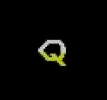Still new to linux hope its ok to ask here. I decided to replace one of my backup drives for the first time in 5ish years with a new 2.5" HDD meant for internal use but in an enclosure (the enclosure works fine). I formatted it in ntfs via gparted and everything went as expected, I even created a large veracrypt container file. I safely removed the drive and after a few hours I re-connected it and it made the notification noise that indicates the drive was detected but it’s filesystem wasn’t mounted. It showed up in gparted, disks and lsblk (as sdb1). Searched online and learned to manually mount it in the /mnt/ directory but I didnt want to manually do that everytime. I ended up reformatting it and for good measure, connected to another port and boom it mounted once connected. Decided not to create the file container or even incorporate the drive into my backup strategy yet until I get input whether or not this is a hardware issue or software. So what do you guys think happened? Not sure what info to provide
Edit: the filesysten and encryption software I chose is for compatibility between my devices
Edit 2: new errors relating to my hardware started showing up when further proceeding with my plan so I’m just going to return it and try again
You need somebody who knows your Popos.
In general, linuxes autodetect all hardware, but do not automount all filesystems. This is intended. It is a matter of configuration, and so the different distros have different tastes regarding this topic.
I don’t know the reason, but I’m intrigued: why Veracrypt and NTFS instead of something like LUKS and EXT4?
Mostly just for cross compatibility between my devices and I really like veracrypt
Sorry, I am unaware of a cross-system full disk encryption solution.
Are you intentionaly using NTFS for compatibility with another machine? If not, I’d use a Linux native filesystem like xfs or ext4 and add it to /etc/fstab
Yeah its for compatibility between my devices, appreciate the help
Maybe you unplugged the device before unmounting it leaving the filesystem in an odd state? Next time it fails to auto mount check /var/log/syslog for recent error clues.
In my very limited experience, when this happens the filesystem can (and will) still be mounted as read-only.
I always eject/safely remove my drives but I will check the syslog thank you so much for pointing that out



